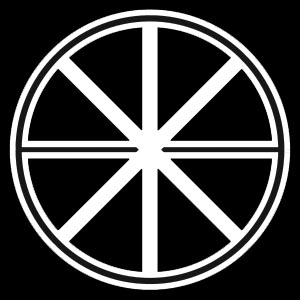ABOUT THE WHEEL
The Wheel is a journal of Orthodox Christian thought and culture. It seeks to articulate the Gospel intelligently and constructively for the twenty-first century—a pluralistic era that presents Christianity with new and unique challenges, calling for a creative reimagination of the Church’s social identity and role in public discourse.
“A wonderful journal... A truly attractive, compelling, and necessary contribution to the life of our Church.”
Founded in 2015, The Wheel has a subscriber base that spans six continents and includes senior church leaders and many academic libraries. The journal publishes a wide range of contributions on Orthodox theology, spirituality, history, and liturgical arts, alongside serious engagements with the challenges of contemporary political ideologies, reflections on natural empirical science, art, poetry, and short stories. Through the diversity of its approach, The Wheel aims to move beyond the polarizations of much current discourse in the Orthodox Church.
As a quarterly journal, The Wheel publishes either four issues per year or, in some cases, two standard issues plus one double issue. These double-size volumes explore urgent topics at the crossroads of contemporary political conversations and the Christian gospel, and have been among our most popular issues.
The journal’s editorial mission is inspired by the early Christians who transformed the meaning of the pagan symbol of the wheel by means of the popular Christogram, ΙΧΘΥΣ (ichthys). For us, the wheel serves as a metaphor for a tradition that both grounds us and moves us forward. Vladimir Lossky, one of the great Orthodox thinkers of the twentieth century, expressed just such an understanding of church tradition in his book, In the Image and Likeness of God:
Christian graffito on a marble slab in Ephesus.
"If the Scriptures and all that the Church can produce in words written or pronounced, in images or in symbols liturgical or otherwise, represent the differing modes of expression of the truth, tradition is the unique mode of receiving it. We say specifically unique mode and not uniform mode, for to Tradition in its pure notion there belongs nothing formal. It does not impose on human consciousness formal guarantees of the truths of faith, but gives access to the discovery of their inner evidence. It is not the content of Revelation, but the light that reveals it; it is not the word, but the living breath which makes the words heard at the same time as the silence from which it came; it is not the truth, but a communication of the Spirit of Truth, outside which the truth cannot be received. […] It is the life of the Holy Spirit in the Church."
The wheel symbol overlays the Greek letters ΙΧΘΥΣ, an acronym for Ἰησοῦς Χριστὸς Θεοῦ Υἱὸς Σωτήρ (Jesus Christ, Son of God, Savior).
The thorniest problems of our time cry out for guidance from the Church’s tradition, approached with an awareness of the multifaceted nature of truth that continues to be discovered and implemented over time through a process of prayer, creative reflection, and debate. Likewise, although the editors stand firmly within the tradition of the Orthodox Church, we welcome contributions from those outside its formal boundaries that challenge us to engage more deeply with the living gospel of Christ.
We do not promise that the perspectives offered here will satisfy everyone, but we hope our readers will never retreat from prayerful, respectful efforts to discern God’s hand in contemporary life. Indeed, our one editorial certainty is that living out the inexhaustible truth of the cross and the empty tomb will continue to beckon the Church to hear and respond to the most radical and challenging ideas without fear.
Editorial Review
Submissions to The Wheel are first screened by the editorial board, which comprises academics and professionals in other fields. If a submission meets the journal’s basic standards and is deemed topically relevant, it is referred for review and editing by either a board member or an outside reviewer with subject expertise. The manuscript is then returned to the Editor-in-Chief with a confidential recommendation to publish or reject. If the editorial board decides to accept an article, the author is often asked to make revisions based on editorial feedback.
The Wheel is not affiliated with a specific ecclesiastical jurisdiction, but is overseen by an international advisory board of senior scholars and leaders in various canonical jurisdictions of the Orthodox Church. The advisory and editorial boards meet jointly at least once a year to review editorial procedures and staffing and to plan areas of thematic emphasis. Advisory board members also frequently assist in shaping individual issues and reviewing manuscripts.
PRAISE FOR THE WHEEL
““The good day,” goes a Greek proverb, “is evident from the dawn.” The first issue of The Wheel struck me as just that: the bright dawn of a good day in the life of Orthodox Christianity in the 21st century.
”
“The first edition of The Wheel has excited me with hope that with such an alternative now available, Orthodox people will be energized to recover their faith in the Church.”
“English has long surpassed Russian, Greek, and French as the primary shared language of world Orthodoxy. The very thing lacking was such a journal of universal dimension, in which Orthodox thinkers from different countries could freely ponder and discuss urgent contemporary issues. This is the kind of initiative that is most needed.”


